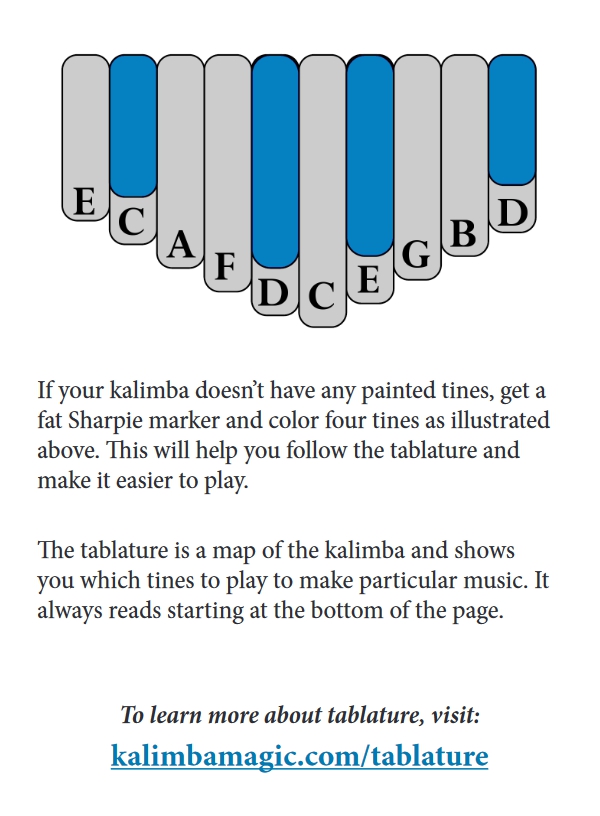
Use of this website constitutes acceptance of the Privacy Policy and User Agreement. Copyright © 2020 Kalimba Magic. All Rights Reserved.
A great many people now own kalimbas made in China. These kalimbas apparently were created with an intent to play western pop songs. However, you can also play traditional African music on them… and I will show you how.
It turns out there is a traditional 8-Note karimba that is particularly important in the evolutionary tree of African kalimbas. It is thought to be the original tuning, the grandmother of the African-tuned Karimba and the mbira dzavadzimu. I call it the Student Karimba and Andrew Tracey, Hugh Tracey’s son, called it the “Original Mbira”. The notes on this 8-Note instrument are arranged differently than the new 10-Note kalimbas, but the range is the same – from the low root note (C4), up an octave and a third (E5).
In other words, anything you could play on the “original mbira”, you can also play on the 10-Note Kalimba in C. The thumb patterns will be transformed, because the notes are arranged differently. However, your 10-Note Kalimba can play African music, and I have put some traditional African karimba and mbira songs and concepts into a handy eBook called “African Music on the 10-Note Kalimba in C”.
The final song of this eBook is “New Day”. It is complex, four phrase mbira music, which can be played on the simple, tiny 10-Note Kalimba. I think that is pretty cool.
“New Day”, a song in the style of traditional mbira music, and the final song in this instructional download.
I will let this eBook speak for itself – here are a few of the pages from the book. First, this is how the 10-Note kalimba is tuned:

You can get the download: “African Music for the 10-Note Kalimba in C” for playing with your western-tuned 10-Note Kalimba in C, your 17-Note Kalimba in C, or any other diatonic kalimba withe at least 10 notes and the root note in the bass tine.


Sign up for our newsletter and free resources with your email address:
We pinky promise not to spam you and to only send good stuff.
 Assist Paul Tracey Rebuild His House in Pacific Palisades
Assist Paul Tracey Rebuild His House in Pacific Palisades 8-Note Spiral Kalimba Turned into a Student Karimba
8-Note Spiral Kalimba Turned into a Student Karimba Seek to Infuse Your Musical Moments With Beauty and Magic
Seek to Infuse Your Musical Moments With Beauty and MagicUse of this website constitutes acceptance of the Privacy Policy and User Agreement. Copyright © 2020 Kalimba Magic. All Rights Reserved.